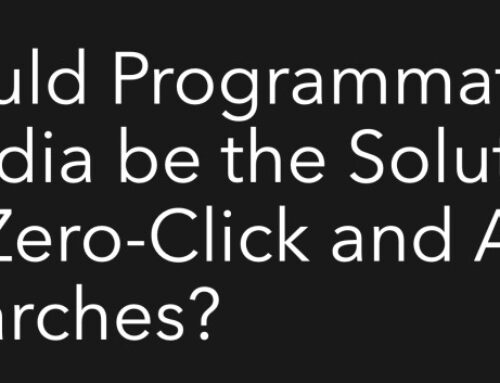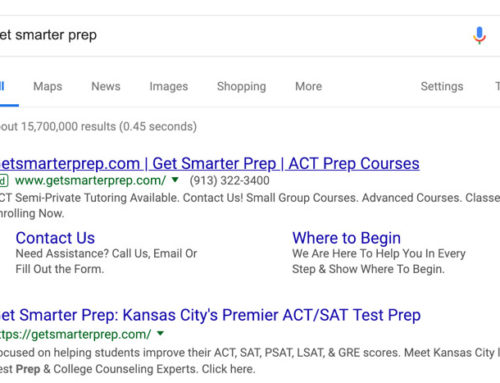I remember the very first time I discovered how to make a website rank on page one of the search engines. It was 2005ish and I was selling online business profile pages for the yellow pages company I worked for. These profile pages were simple, template pages that allowed for the business to post its NAP and a business description, but otherwise they weren’t very robust.
Anyway, a friend of mine figured out how to alter the title tag to include the business’s main keywords and geography (i.e. equipment rental kansas city) and boy did those profile pages start to pop.
Compared to the animated, frame heavy web pages of 2005, our IYP profile pages were clean, crawler friendly, text pages that the search engines loved. And with keyword specific title tags, every profile page optimized started ranking on page one.
Worth noting, most websites at that time were using the word “home” for a title tag. Ugh.
Truth is, I was able to use the title tag strategy for years. I told every business owner who would listen and when they made that simple change, their ranking always improved.
Then I discovered the power of including lots and lots of keywords in the context of the page and if I’m honest, did my share of “keyword stuffing” and occasionally experimented with white text on white backgrounds. (I’m not proud of myself, but it sure as worked. Don’t judge!)
As these tactics got more and more popular, two things happened. One, everyone started using them so they had less impact; and two, Google started to figure out these tricks. They altered their algorithms so that keyword stuffing and title tags had less impact and in some cases could even get a site penalized.
Enter backlinks, the heart of Google’s PageRank algorithm. Suddenly, SEO was about improving PageRank by getting links, lots and lots of links from other websites. This meant that SEOs were spending less time optimizing “on-site” and were thrust into the world of acquiring links from others.
Off-site SEO in the shape of webmaster outreach and guest posts was born. Reciprocal links worked for a little while and then Google figured out what was going on and devalued traded links.
This also inspired the ultimate in black hat SEO – paid links – which also worked for a long time as Google tried to tell them apart from links that were “earned” – a hard thing to do since paid links don’t look any different from earned links.
But again, Google learned. There were signals that indicated that a link might not be authentic. Specifically, if your link appeared near a link for Viagra or payday loans or was completely unrelated to the content on the page, it was probably a paid link.
Fast forward to 2015 when everyone has a pretty good title tag, no one stuffs keywords anymore and Google penguins and pandas have dialed back the impact of backlinks. Today, SEO is a blend of so much more, including social signals (very hard to fake) and online reviews (don’t you dare try to fake or buy these!) and about a billion other things.
SEOs a lot smarter than me can provide details of what specifically works in 2015.
But in true “internet gobbledygook” fashion I’m just gonna lay it out in plain and simple terms.
Make your online presence awesome. That’s what search engines are looking for. In other words, stop trying to use “strategies” and simply do the things that would make your customers want to do business with you anyway. Stuff like:
Have robust content on your site.
This can be a blog full of thought leadership pieces or free advice, great product/service descriptions, images, videos, etc. Treat your website like it’s your showroom. Display your products and services in a way that people can see what they’ll get when they do business with you. Tell them why they should choose you.
Have some personality and engage with users on the web.
Don’t treat social media like an obligation or a tactic, but rather an opportunity to engage with others online just like you do in the real world. Be friendly and supportive and sharing and caring and all those things that make you awesome beyond the good work you provide. People want to do business with people they like – so BE LIKABLE.
Create an online environment that works for your customers.
If they’re looking at your site on their phones, make sure that it renders for their screen size. If an app is appropriate for your products/services, build an app. Have online forms for those who like to do everything online and be ready to answer the phone or a tweet for those who like to communicate that way. Remember, everyone uses the web at different levels. If you’re not as advanced as your customers, get there, or you may lose their business to someone who is.
Pay attention to your online presence, even the parts you don’t control.
Your business is listed on Yelp and CitySearch and those online yellow pages, even if you didn’t put it there. Make sure you’re represented properly with the right information, logo, images, branding, description of your business, products and services. Pay attention to those reviews and reply to them when it makes sense. Google your name and see what you find. You’re likely to find a lot more than your website and your Facebook page.
Does your HTML have to be in order and your navigation clean? Do you still need good title tags and keywords and backlinks? Sure. But you knew that. You’ve already taken care of that. So forget about “SEO strategies.” Search engines write their algorithms in an effort to rank “the best” businesses, so focus on a web presence that shows you are the best and the rest will fall into place.
Thanks for reading.
David McBee
PS: Paid advertising on the web won’t help or hurt your SEO. But don’t rule it out because what works in the real world also works on the web. So…
Advertise.
You have a sign outside of your business or plastered on the side of your van. You run TV, newspaper and/or radio to get your name out there. Do the same online with display ads and pre-roll video and Google AdWords. These are simply online equivalents of billboards, commercials and print yellow pages. You may not think they’re as effective as ranking first on a Google SERP, and you may be right. But there’s a reason millions of businesses are embracing these tactics.



Great article. So I guess that our website is never done!?
Jeff, I think you might be onto something. 🙂